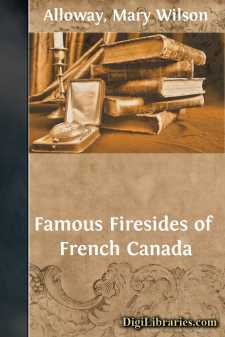Categories
- Antiques & Collectibles 13
- Architecture 36
- Art 48
- Bibles 22
- Biography & Autobiography 813
- Body, Mind & Spirit 142
- Business & Economics 28
- Children's Books 14
- Children's Fiction 11
- Computers 4
- Cooking 94
- Crafts & Hobbies 4
- Drama 346
- Education 46
- Family & Relationships 57
- Fiction 11829
- Games 19
- Gardening 17
- Health & Fitness 34
- History 1377
- House & Home 1
- Humor 147
- Juvenile Fiction 1873
- Juvenile Nonfiction 202
- Language Arts & Disciplines 88
- Law 16
- Literary Collections 686
- Literary Criticism 179
- Mathematics 13
- Medical 41
- Music 40
- Nature 179
- Non-Classifiable 1768
- Performing Arts 7
- Periodicals 1453
- Philosophy 64
- Photography 2
- Poetry 896
- Political Science 203
- Psychology 42
- Reference 154
- Religion 513
- Science 126
- Self-Help 84
- Social Science 81
- Sports & Recreation 34
- Study Aids 3
- Technology & Engineering 59
- Transportation 23
- Travel 463
- True Crime 29
Famous Firesides of French Canada
Description:
Excerpt
About twelve years after the first Spanish caravel had touched the shores of North America, we find the French putting forth efforts to share in some of the results of the discovery. In the year 1504 some Basque, Breton and Norman fisher-folk had already commenced fishing along the bleak shores of Newfoundland and the contiguous banks for the cod in which this region is still so prolific.
The Spanish claim to the discovery of America is disputed by several aspirants to that honour. Among these are the ancient mariners of Northern Europe, the Norsemen of the Scandinavian Peninsula. They assert that their Vikings touched American shores three centuries before Isabella of Castille drove the Moors from their palaces among the orange groves of Espana. Eric the Red, and other sea-kings, made voyages to Iceland and Greenland in the eleventh and following centuries; and it is highly probable that these Norsemen, with their hardihood and enterprise, touched on some part of the mainland. One Danish writer claims that this occurred as far back as the year 985, about eighty years after the death of the Danes' mortal enemy, the great Saxon King Alfred.
Even the Welsh, from the isolation of their mountain fastnesses, declare that a Cambrian expedition, in the year 1170, under Prince Modoc, landed in America. In proof of this, there is said to exist in Mexico a colony bearing indisputable traces of the tongue of these ancient Celts.
The term Canada first appears as the officially recognized name of the region in the instructions given by Francis I to its original colonists in the year 1538.
There are various theories as to the etymology of the word, its having by different authorities been attributed to Indian, French and Spanish origins.
In an old copy of a Montreal paper, bearing date of Dec. 24, 1834, it is asserted that Canada or Kannata is an Indian word, meaning a village, and was mistaken by the early visitors for the name of the whole country.
The Philadelphia Courier, of July, 1836, gives the following not improbable etymology of the name of the province:—Canada is compounded of two aboriginal words, Can, which signifies the mouth, and Ada the country, meaning the mouth of the country. A writer of the same period, when there seems to have been considerable discussion on the subject, says:—The word is undoubtedly of Spanish origin, coming from a common Spanish word, Canada, signifying a space or opening between mountains or high banks—a district in Mexico of similar physical features, bearing the same name.
"That there were Spanish pilots or navigators among the first discoverers of the St. Lawrence may be readily supposed, and what more natural than that those who first visited the gulf should call the interior of the country El Canada from the typographical appearance of the opening to it, the custom of illiterate navigators naming places from events and natural appearances being well established."
Hennepin, an etymological savant, declares that the name arose from the Spaniards, who were the first discoverers of Canada, exclaiming, on their failure to find the precious metals, "El Capa da nada," or Cape Nothing. There seems to be some support of this alleged presence of the Spanish among the early navigators of the St. Lawrence, by the finding in the river, near Three Rivers, in the year 1835, an ancient cannon of peculiar make, which was supposed to be of Spanish construction....


